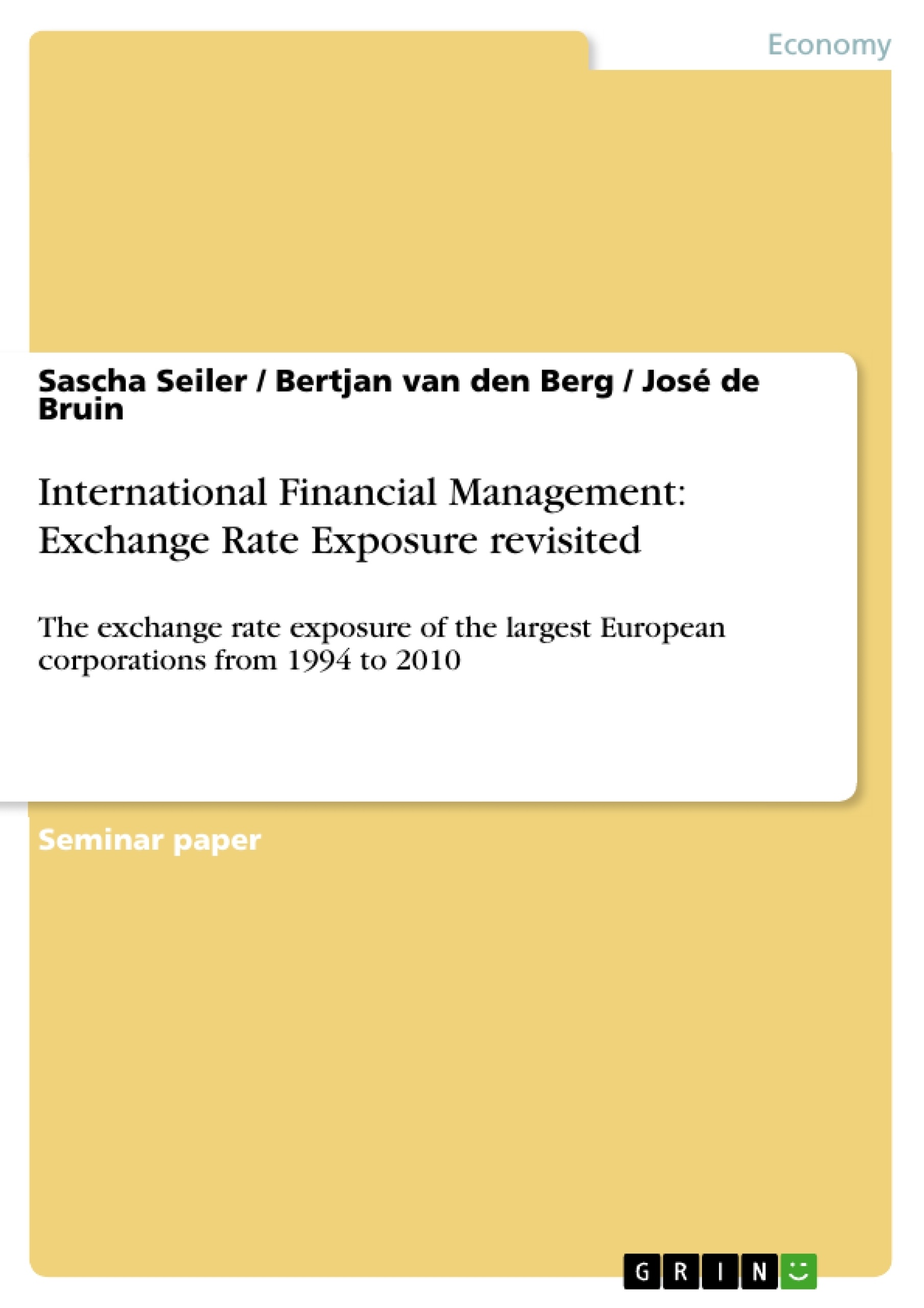Various studies have shown that exchange rate exposure is empirically lower for US multinationals than theory predicts. We examine this discrepancy for the largest Eurozone companies from 1994 till 2010 where the introduction of the Euro could have led to significant exposure reduction.
Furthermore, we examine the relationship between exchange rate exposure and transnationality which is a novelty to date. We find that few European multinationals seem to have a significant exchange rate exposure and surprisingly the overall risk profile of transnational companies is lower which indicates that the risk from exchange rate exposure is more than compensated by risk reducing effects resulting from a high degree of transnationality.
Inhaltsverzeichnis (Table of Contents)
- ABSTRACT
- INTRODUCTION
- LITERATURE REVIEW
- HYPOTHESES
- DATA AND METHODOLOGY
- RESULTS
- CONCLUSIONS
- LIMITATIONS AND FURTHER RESEARCH
- REFERENCES
Zielsetzung und Themenschwerpunkte (Objectives and Key Themes)
This paper examines the exchange rate exposure of the largest European corporations from 1994 to 2010, particularly focusing on the impact of the Euro's introduction. It aims to investigate whether the discrepancy observed in US multinationals, where empirical exchange rate exposure is lower than theoretical predictions, holds true for European companies. The study also explores the relationship between exchange rate exposure and transnationality, a novel aspect in this field.
- Examining exchange rate exposure of major European companies before and after the Euro introduction.
- Investigating the relationship between exchange rate exposure and transnationality.
- Assessing whether the discrepancy between theoretical and empirical exchange rate exposure observed in US firms applies to European corporations.
- Exploring the potential impact of risk management strategies on exchange rate exposure.
- Addressing the "exchange rate exposure puzzle" by analyzing the role of operational and financial hedging.
Zusammenfassung der Kapitel (Chapter Summaries)
The paper begins with an introduction that highlights the discrepancy between theoretical and empirical exchange rate exposure observed in previous studies, primarily focusing on US multinationals. It introduces the research question of whether this pattern holds true for European companies, particularly in the context of the Euro introduction, and explores the relationship between transnationality and exchange rate exposure.
A comprehensive literature review follows, discussing the existing research on exchange rate exposure and analyzing various models and approaches. It explores the "exchange rate exposure puzzle" and highlights the importance of accounting for risk management strategies in empirical studies.
The paper then lays out the hypotheses, outlining the expected relationship between transnationality and exchange rate exposure. It describes the dataset used and the methodology employed in the study.
Finally, the paper presents the results of the statistical analysis, examining the relationship between exchange rate exposure and transnationality. The discussion explores the implications of these findings and their contribution to the understanding of exchange rate exposure for European companies.
Schlüsselwörter (Keywords)
Exchange rate exposure, transnationality, European corporations, Euro introduction, risk management, hedging, “exchange rate exposure puzzle," EURO STOXX 50 index, empirical research, multinational firms, financial corporations.
- Citar trabajo
- Sascha Seiler (Autor), Bertjan van den Berg (Autor), José de Bruin (Autor), 2011, International Financial Management: Exchange Rate Exposure revisited, Múnich, GRIN Verlag, https://www.grin.com/document/197087



